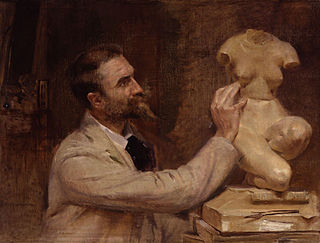
Edward Onslow Ford was an English sculptor. Much of Ford's early success came with portrait heads or busts. These were considered extremely refined, showing his subjects at their best and led to him receiving a number of commissions for public monuments and statues, both in Britain and overseas. Ford also produced a number of bronze statuettes of free-standing figures loosely drawn from mythology or of allegorical subjects. These 'ideal' figures became characteristic of the New Sculpture movement that developed in Britain from about 1880 and of which Ford was a leading exponent.
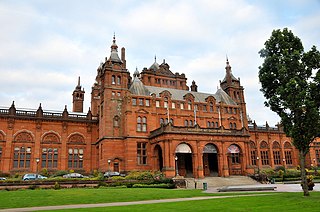
Kelvingrove Art Gallery and Museum is a museum and art gallery in Glasgow, Scotland, managed by Glasgow Museums. The building is located in Kelvingrove Park in the West End of the city, adjacent to Argyle Street. Kelvingrove Art Gallery and Museum is one of Scotland's most popular museums and free visitor attractions.

The Carnegie Museum of Art is an art museum in the Oakland neighborhood of Pittsburgh, Pennsylvania. The museum was originally known as the Department of Fine Arts, Carnegie Institute and was formerly located at what is now the Main Branch of the Carnegie Library of Pittsburgh. The museum's first gallery was opened for public use on November 5, 1895. Over the years, the gallery vastly increased in size, with a new building on Forbes Avenue built in 1907. In 1963, the name was officially changed to Museum of Art, Carnegie Institute. The size of the gallery has tripled over time, and it was officially renamed in 1986 to "Carnegie Museum of Art" to indicate it clearly as one of the four Carnegie Museums.

Benno Schotz was an Estonian-born Scottish sculptor, and one of twentieth century Scotland's leading artists.
The city of Glasgow, Scotland, has many amenities for a wide range of cultural activities, from curling to opera and from football to art appreciation; it also has a large selection of museums that include those devoted to transport, religion, and modern art. In 2009 Glasgow was awarded the title UNESCO Creative City of Music in recognition of its vibrant live music scene and its distinguished heritage. Glasgow has three major universities, each involved in creative and literary arts, and the city has the largest public reference library in Europe in the form of the Mitchell Library. Scotland's largest newspapers and national television and radio companies are based in the city.
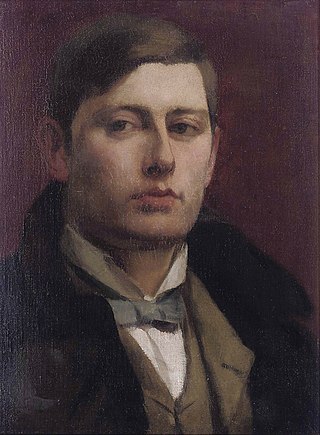
Sir George James Frampton, was a British sculptor. He was a leading member of the New Sculpture movement in his early career when he created sculptures with elements of Art Nouveau and Symbolism, often combining different materials such as marble and bronze in a single piece. While his later works were more traditional in style, Frampton had a prolific career in which he created many notable public monuments, including several statues of Queen Victoria and later, after World War I, a number of war memorials. These included the Edith Cavell Memorial in London, which, along with the Peter Pan statue in Kensington Gardens are possibly Frampton's best known works.
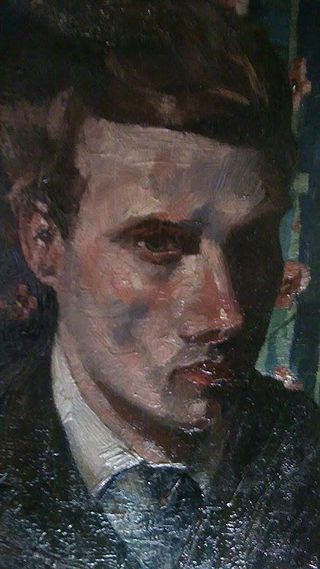
John Quinton Pringle was a Scottish painter, influenced by Jules Bastien-Lepage and associated with the Glasgow Boys.
William Birnie Rhind RSA (1853–1933) was a Scottish sculptor.

George Anderson Lawson was a British Victorian era sculptor who was associated with the New Sculpture movement.

James Paterson PRSW RSA RWS, was a Scottish landscape and portrait painter associated with The Glasgow Boys movement of artists. He is best known for his landscape paintings of Dumfriesshire, where he lived, at Moniaive from 1885 to 1905.
Gilbert William Bayes was an English sculptor. His art works varied in scale from medals to large architectural clocks, monuments and equestrian statues and he was also a designer of some note, creating chess pieces, mirrors and cabinets.

Norah Neilson Gray was a Scottish artist of the Glasgow School. She first exhibited at the Royal Academy while still a student and then showed works regularly at the Paris Salon and with the Royal Academy of Scotland. She was a member of The Glasgow Girls whose paintings were exhibited in Kirkcudbright during July and August 2010.
Sir Richard Brinsley Ford was a British art historian, scholar, and collector. He inherited a large collection of art from his family and was himself an avid collector. A drawing that he purchased in 1936 was sold by his estate for $12 million in 2000. Ford was the director of the Burlington Magazine, president of Walpole Society and chaired the National Art Collections Fund. During World War II he was a Troop Sergeant-Major in the Royal Artillery and then served in the military intelligence organisation, MI9.
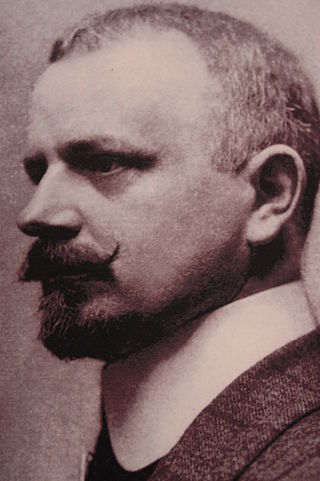
David Gauld was an important Scottish artist who worked in both oils and stained glass and was regarded as being one of the innovators within the Glasgow Boys group. Some of his works, such as St Agnes and Music are seen as precursors of the Art Nouveau movement. His works were seen as having both a Japanese and Pre-Raphaelite influence upon them.

Alice Bertha Moreton, née Tippin, was an English sculptor, draughtsman and artist from Liverpool.
James Connell & Sons was an art gallery business and publisher of etchings in Glasgow and London. It was established by James Hodge Connell who retired in 1908, leaving the business to his sons James D. Connell, Thomas Connell, and David Connell. Dealing mainly in etchings and works on paper, artists whose work was sold through the gallery included: Andrew Affleck, Eugene Bejot, David Young Cameron, Hester Frood, Gertrude Ellen Hayes, Henry Rushbury, Nathaniel Sparks, Alfred W. Strutt, Edward Millington Synge, William Walker (engraver), Ernest Herbert Whydale and Mary G. W. Wilson.
Annie Rose LaingnéeAnnie Rose Low was a Scottish artist, known for her paintings of landscapes, children and interiors.
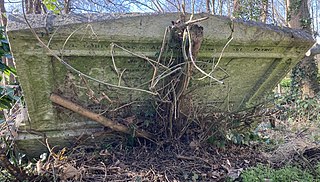
Graham Petrie (1859-1940), was a British artist, poster designer, and author. He was well known for his landscape and travel posters for railway companies.














